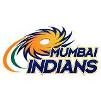This is the sixth in a series of team-by-team preview articles for the upcoming 2009 Indian Premier League. They are being released two per day until the end of the week. Also featured: Deccan Chargers, Royal Challengers Bangalore, Kolkata Knight Riders, Kings XI Punjab, Chennai Super Kings
Delhi were an anomaly last year. While the other teams were struggling to hide the weak links among the seven Indians required for the playing XI, Virender Sehwag’s men were afflicted by a series of underperforming internationals. In the end, the team that appeared to be as strong as any had a topsy-turvy campaign that took them to fourth place.
Apart from Farveez Maharoof (15 wickets at 16.6, ER 6.90, SR 14.4) and Glenn McGrath (16 wickets at 29.75, ER 6.61, SR 27.0), the imports proved to be Delhi’s achilles heel.
Mohammad Asif was the epitomy of Delhi’s international woes, loping in lackadaisically and bowling with his arm in a support mechanism. Two years earlier, he was one of the world’s premier pacemen, but during the IPL, he performed woefully (8 wickets at 37.00, ER 9.25, SR 24.0). To cap it all off, he was arrested at Dubai Airport for opium possession after the tournament and was later found to have failed a drugs test during the competition.
With so much money at stake, legal action is always a possibility, and the IPL and Delhi administrators could regard themselves lucky that Sehwag’s men hadn’t carried off the title. In the end, the blanket banning of Pakistani players following the Mumbai terrorist attacks allowed Asif, Delhi and the IPL to part ways relatively gracefully; otherwise, Asif’s expulsion would have focused the limelight entirely on the ugly spectre of doping.
Not that Asif was the only import to blame. Shoaib Malik (52 runs at 13.00, SR 110.6), the Pakistani captain at the time, and Tillakaratne Dilshan (104 runs at 17.33, SR 131.6) both floundered with the bat, and neither contributed much with the ball (two and one wicket respectively). AB de Villiers played intermittently (95 runs at 19.00, SR 96.93) as Dinesh Karthik was favoured with the gloves and other imports were squeezed in ahead of him. This proved to be something of a blunder as Karthik batted unconvincingly (145 runs 24.16, SR 135.5) and kept rather untidily. With Manoj Tiwary also struggling (104 runs at 26.00, SR 122.4), it was the middle-order, filled with accomplished and internationally capped players, which proved to be the soft underbelly.
Delhi’s batting was almost entirely reliant on the top order trio of Sehwag (406 runs at 33.83, SR 184.5), Gautam Gambhir (534 runs at 41.07, SR 140.9) and Shikhar Dhawan (340 runs at 37.77, SR 115.3); Dhawan aggregated almost 2.5 times more runs than Karthik, the team’s fourth highest runscorer. Whenever the trio fired, Delhi invariably mounted a formidable total, but their departure often heralded a collapse. When this happened early in the innings, heavy defeat usually followed.
Delhi desperately scrambled to find a way to fit a productive quartet of imports into their team with little success, whereas other teams usually found that part of the jigsaw to be the least of their problems.
Luckily for Sehwag and coach Greg Shipperd, the resource allocation dilemma couldn’t get any worse this year, and due to changes in form and availability of the imports over the last 12 months, as well the playing venues, they should be able to easily and vastly improve the productivity of their foreign legion.
Arguably the finest limited overs spinner in the world, Daniel Vettori showed that slow men could prosper in T20 during the inaugural World Cup and his current T20 career economy rate hovers around 5.5, a remarkable effort by any measure. Due to international commitments, the Kiwi skipper played only two games in the first season, but he will be present for the entire South African campaign. Vettori also adds depth to the lower order batting and improves the fielding of the team, meaning that Amit Mishra will could watch most of the campaign from the sidelines.
Given how poorly the batting imports, Karthik and Tiwary played last year, it’s hard to see the middle order sinking any lower than they did last season, regardless of any blunders in the team composition strategy. Nevertheless, making the correct selections should be easier this year. De Villiers is clearly more reliable than Karthik with the gloves, and after scoring three centuries in his last six Tests against Australia over the past four months, all in vastly contrasting conditions, it would be impossible to deny him a berth on home soil, nor could he do any worse than last year. However, Karthik should still command a place in the team; he was one of only four players to pass 1000 runs for the Indian first-class season, and Cheteshwar Pujara was the only other player to compile five centuries. Given the aplomb he showed when opening in the Tests in South Africa and England, Karthik should adapt to the conditions much better than the vast majority of Indian batsmen in the tournament. This probably means that Dilshan will miss out, especially given his relatively weak record outside the subcontinent. Tiwary has continued to score heavily on the domestic scene (469 runs at 52.11 in 12 List A matches this season) and should improve on last year’s performances.
Following the inexplicable decision to trade Shikhar Dhawan for Ashish Nehra, the middle order will need to fire. Assuming that Sehwag, Gambhir, de Villiers, Tiwary and Karthik all play, another two places in the top seven remain unfilled. At the moment, it seems as though Delhi will be forced to field a New Zealand-style line-up. The Kiwis often pack their team with “bits and pieces” allrounders or bowlers who can bat, but this is usually due to a paucity of quality batsmen. On the other hand, Delhi’s situation is of their own making. Despite Sehwag’s stunning limited overs form in the past year, and Gambhir’s relentless evolution towards completeness, the pair cannot be taken to be invincible and it won’t be easy for them to surpass their performance in the inaugural season. Unless Vettori bats at No. 7, which could be stretching things too far, the last import’s position will probably be fought out between Maharoof, Paul Collingwood, Andrew McDonald, Owais Shah or David Warner. Given Sehwag’s reluctance to use his loopy spin and the fact that the top five rarely bowl, Shah and Warner will probably find themselves on the outer. While Warner was stunning on his T20 debut for Australia, the fact that he is yet to play first-class cricket is an indication that there must be more than a few chinks in the armour. South Africa and New Zealand promptly found them and shut down his scoring in the following limited overs matches, and the other international quality bowlers will fancy their chances of doing likewise. This means that Mithun Manhas and Rajat Bhatia are poised to contest the final middle order vacancy. Both have performed strongly on the domestic circuit, and while Bhatia can also bowl, neither have proven themselves with the bat in the way that Dhawan has. At the very least, the retention of Dhawan in the squad would have eased the pressure by giving Delhi more room to manoeuvre their batsmen.
The trading of Dhawan for Nehra appears all the more questionable when one looks at Delhi’s surprisingly healthy state of Delhi’s pace stocks. Who was the Daredevils’ most prolific wicket-taker last year?
Vijaykumar Yo Mahesh didn’t appear to gain much attention, but the Tamil Nadu paceman took 16 wickets at 23.12 in 11 matches (ER 8.77, SR 15.8). He ranked eighth in terms of wickets; apart from Sohail Tanvir, all ahead of him played at least two more games. Yo Mahesh has continued his incisive run in the past domestic season, taking 15 wickets at 16.06 in just eight List A matches. Unlike his IPL campaign, he was also relatively economical (4.05). The performances of McGrath and Maharoof have been discussed above, while Pradeep Sangwan, who played seven matches last year under the youth quota system (5 wickets at 43.00, ER 8.95) has had another steady domestic season, taking 15 wickets at 29.80 (ER 5.03) from 11 List A matches. Sangwan is also capable with the bat. Should Sangwan be deemed to be too much of a risk, and with the pitches also expected to offer some turn, Delhi could always play Mishra. In contrast, Nehra has played in just two List A and four first-class matches (7 wickets at 48.85) for the season; coupled with his status as one of the worst and laziest fielders in the world and his complete inability with the bat, Nehra’s selection at Dhawan’s expense seems ludicrous given that comparable or better bowling options are hardly lacking.
Verdict: Delhi have a lot going for them, with two explosive openers, the best spinner in the competition and the greatest seamer of the generation, albeit a retired one. Their middle order is strong, but the last batting and bowling spot could turn out to be something of a liability. In addition, none of their top five are likely to bowl, which means that the remaining six will be difficult to hide if they have a bad day and get savaged. 3rd
Source – blogs.livemint.com










